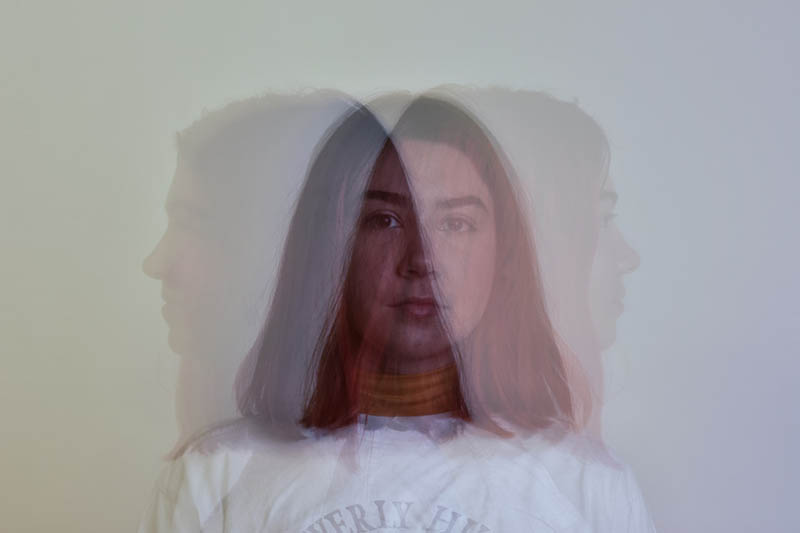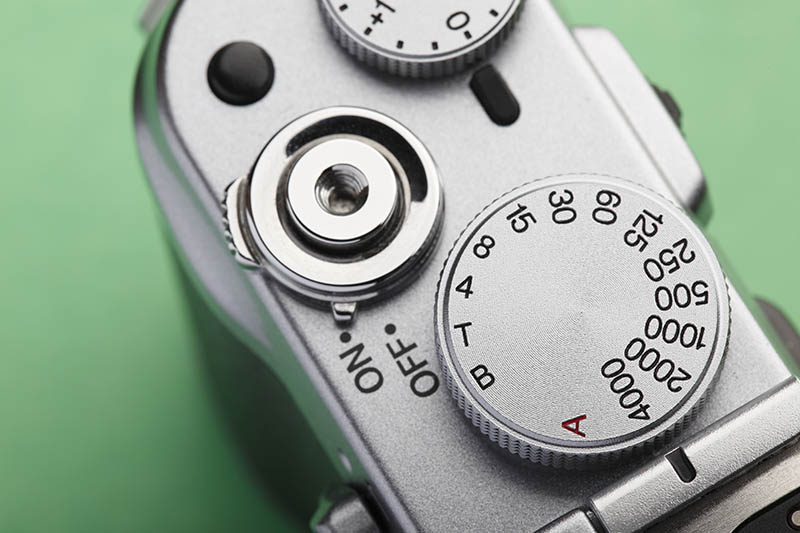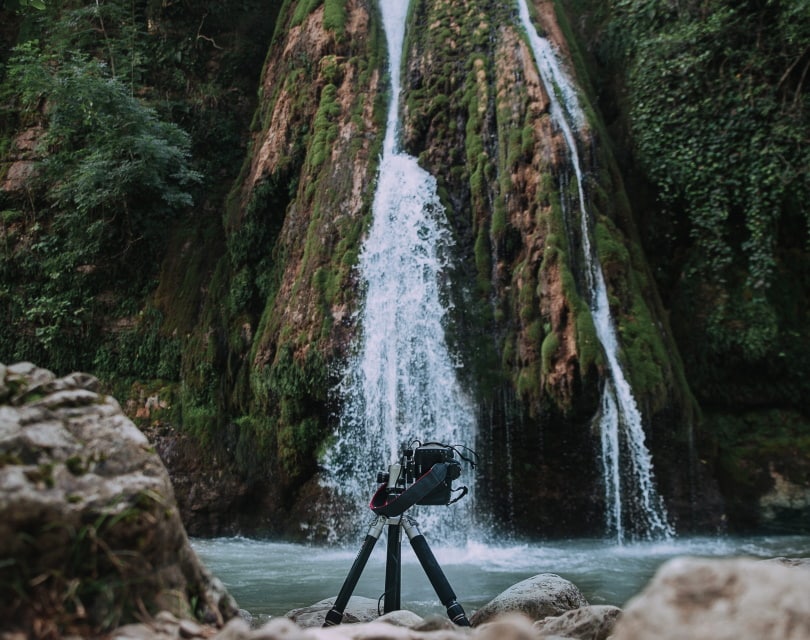What Is the Best Shutter Speed for Portraits? (Easy-to-Use Guide)
Last Updated on

Shutter speed is a setting that’s often discussed in wildlife and sports photography, where there may be movement and action involved. But this setting has a fundamental impact on portrait photography too.
Understanding how shutter speed works and why it matters will help you choose the optimum settings for your camera, and elevate the quality of your portrait photography to new heights.
The shutter speed you choose will depend on various factors, which we’ll go through below. But as a general rule, if you are using a handheld camera, you should set the shutter speed to 1/200th of a second for portraits.

What Is Shutter Speed in Photography?
ISO, aperture, and shutter speed have long been considered the holy trinity of camera settings because of their immense impact on the quality of photographs. At its most basic level, slow shutter speeds result in blur, while fast shutter speeds will capture images of fast-moving subjects in a clear, frozen shot.
How Does Shutter Speed Work?
The camera shutter is a small curtain that sits between the lens, and the light sensors inside a camera. When you snap a photo, the shutter lifts—allowing light through to the light sensors, or film in analog cameras.
The longer the shutter stays open, the longer the light sensors, or film, are exposed to light. A slow shutter speed results in long exposure, while a fast shutter speed creates short exposure.
Shutter speed determines how long the shutter stays open, and it’s measured in fractions of a second. For example, 1/500th of a second is a very fast shutter speed, suitable for fast action shots, while a 30-second exposure is very slow, but used correctly in landscape photography, it will blur clouds and water into a silky flowing material.

Factors That Affect the Ideal Shutter Speed
For traditional portraits, you’ll probably want to select a shutter speed that will minimize unwanted blur, while also setting an aperture that’ll create a shallow depth of field. The shallow depth of field will create deliberate bokeh effects that help to separate the subject of your photo from the background (and possibly foreground), while the optimum shutter speed should keep your model or models clear in the foreground.
Below are several factors to consider when selecting the ideal shutter speed for each scenario.
Equipment

The first factor to consider is the equipment you’re going to be using to capture your portrait.
Using a tripod will reduce camera shake significantly, even if you have relatively steady hands. For this reason, you can afford to lower the shutter speed when using a tripod.
Moreover, you can use a shutter release remote control to capture images without touching your camera. This will reduce shake even further.
Some cameras come with better image stabilization features that will be more forgiving of slight movements, but depending on the lens you use, you may need to compensate by cranking up the shutter speed. As a rule, the chances of blurring will increase with the focal length of your lens. Very long lenses will need a faster shutter speed.
A flash, or artificial light, can be used in dark settings to mitigate the need for a low shutter speed. This can be particularly helpful for capturing models who are moving in low light—like a bride and groom dancing outdoors in the evening.
Environment

For outdoor portraits, natural lighting, moving objects, and the wind all need to be considered when deciding the shutter speed.
Wind will cause your subject’s hair, and background objects, to move, which will cause blurring if you use a slow shutter speed. Similarly, if you’re taking a photograph in low light, for example in the evening or on a cloudy day, you will need to use a slower exposure than you would in bright sunlight.
If you opt to use a slow shutter speed in low-light conditions, consider using a tripod. In very low light, such as under moonlight alone, you may need to set the shutter speed to as slow as 30 seconds, so ask your model to stay perfectly still, if possible!
On the other hand, on very bright days, you’ll need to set your shutter speed to 1/500 or faster to avoid over-exposing your photographs.
Models
Consider who you are taking a portrait of. If animals or children are involved, likely, they won’t sit still for very long, so you might need to use a fast shutter speed to avoid blur. On the other hand, if you are photographing a model who’s skilled at holding a pose, you may be able to get away with a slower shutter speed.
Sometimes, portraits look best when the subject is in the middle of an action. For example, if they’re walking, or dancing. Again, if you want to reduce blur, you’ll need to crank up the shutter speed.
Using Shutter Speed Creatively

As with all aspects of photography, you can use the shutter speed setting on your camera to achieve entirely different results for artistic expression.
Using a very fast shutter speed, you can freeze a moment of quick action that’s too fast to notice with your eyes. Consider a dancer in the middle of her routine. A portrait taken of her using a fast shutter speed would freeze her in place, perhaps also revealing her hair or dress rippling in mid-air.
You could take a photo of the same dancer using a long exposure, or a slow shutter speed. The result would be a fluid and elegant blur of her movements through the frame, with apparition-like qualities.
Another uniquely striking composition that can be achieved with a slow shutter speed, tripod, and a shutter release remote control, would be to capture blurred movement in contrast with a still model. For example, your model could pose very still on a sidewalk, while the traffic behind them blurs into a seamless motion of light.
The same could be done with a very still model standing above a stream or in a shallow river. The slow shutter speed would blur the movement of the water into a dreamy, flowing material, while the model remains crisp and clear.

Final Thoughts
Along with ISO and aperture, shutter speed is one of the three major pillars of photography, and understanding it will help you capture better photographs. For portrait photography in decent light, you should be able to get away with a shutter speed of between 1/200 and 1/400.
Now that you know more about the creative and technical aspects of shutter speeds, you can go out and experiment until you find the perfect shutter speed for your portrait!
Featured Image Credit By: May, Unsplash
About the Author Cheryl Regan
Cheryl is a freelance content and copywriter from the United Kingdom. Her interests include hiking and amateur astronomy but focuses her writing on gardening and photography. If she isn't writing she can be found curled up with a coffee and her pet cat.
Related Articles:
What Is the Best Binocular Magnification for Hunting? Optical Features Explained
How to Clean a Refractor Telescope: Step-by-Step Guide
How to Clean a Telescope Eyepiece: Step-by-Step Guide
How to Clean a Rifle Scope: 8 Expert Tips
Monocular vs Telescope: Differences Explained (With Pictures)
What Is a Monocular Used For? 8 Common Functions
How to Clean a Telescope Mirror: 8 Expert Tips
Brightfield vs Phase Contrast Microscopy: The Differences Explained
